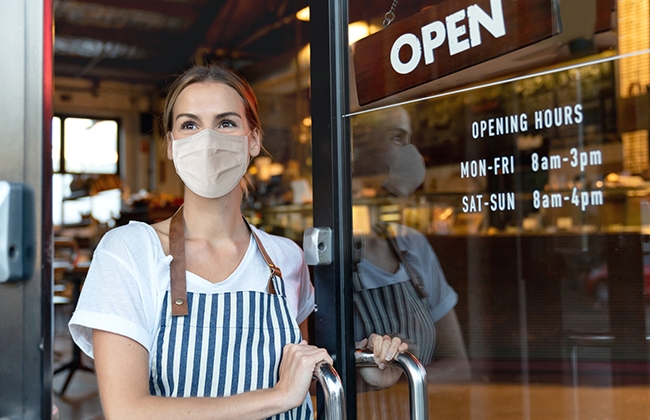
Restaurant Franchise Financing Rebounding
December 4, 2020 | By Brian Geraghty, Head of Restaurant Finance at MUFG in the Americas
Loan pricing and terms reflect healthier market conditions for large and mid-sized restaurant franchise operators.
Financing for restaurant franchise operators in the large and middle-tier segments has mostly bounced back to what it had been before the onset of the COVID-19 pandemic.
Three key themes are unfolding.
A resurgence in rent-adjusted leverage
In the U.S. we see loan terms and pricing that are as aggressive as they were prior to the full-blown health crisis that came into view in late-March. Banks have reverted to accepting a higher leverage profile among borrowers for financing. We see franchisees’ rent-adjusted leverage ratios back to 5.75 after tightening by roughly three-quarters of a turn—to 5.0—during the spring of 2020.
Rent adjusted leveraged (RAL), also known as lease-adjusted leverage, is the ratio of debt to EBITDAR (or earnings before interest, taxes, depreciation, amortization and rent costs).
Restaurant lenders evaluate the RAL of their borrowers, many of which do not own their properties but rather lease them.
Rise in M&A and franchise purchases
The recent momentum in merger-and-acquisition (M&A) activity is coming from the quick‑service and fast-casual market categories of the restaurant industry, which are defined as establishments offering quick, inexpensive dining with limited preparation and customization, no seating hosts, and no alcoholic beverages.
Recent restaurant acquisitions in these market categories highlight the substantial amount of readily available capital for deployment. Financial buyers, in particular, see investment opportunities in large and mid-sized restaurants that are surviving the pandemic, proving the resilience of their business models, and able to provide portfolio diversification as consumer‑facing outfits.
We can also point to an upswing in the valuations and frequency at which franchise establishments are changing hands. In the mid-sized segment, we see a greater number of franchisee purchases at high prices, which indicate to us the desire of owners to enter into this space or expand their foothold.
Lessons learned from the pandemic
We believe that restaurants have emerged from the pandemic with valuable learning experiences that are helping them improve efficiency, enhance customer service, and economize.
The changing economics of quick-service and fast-casual restaurants have led many to shift their focus to drive-through and take-out offerings, and to invest in the technological infrastructure that enables them to field online orders. All the same, casual-dining, family-dining and fine-dining establishments, which rely more on table service, are facing greater challenges.
Brian Geraghty
Head of Restaurant Finance at MUFG in the Americas